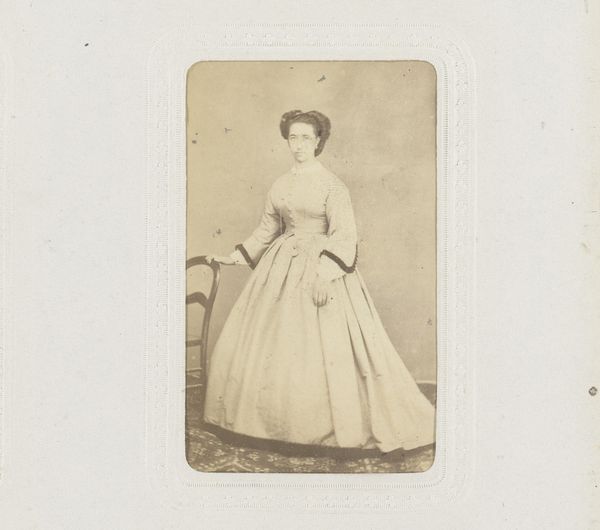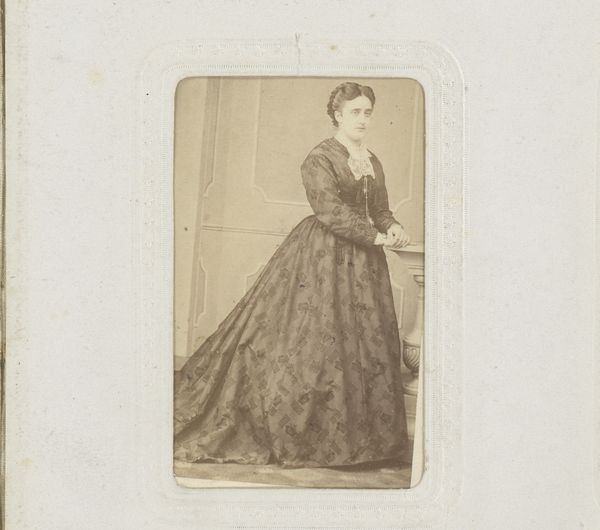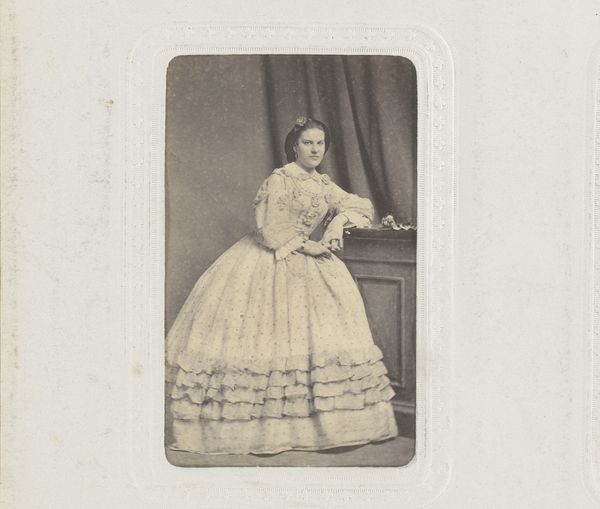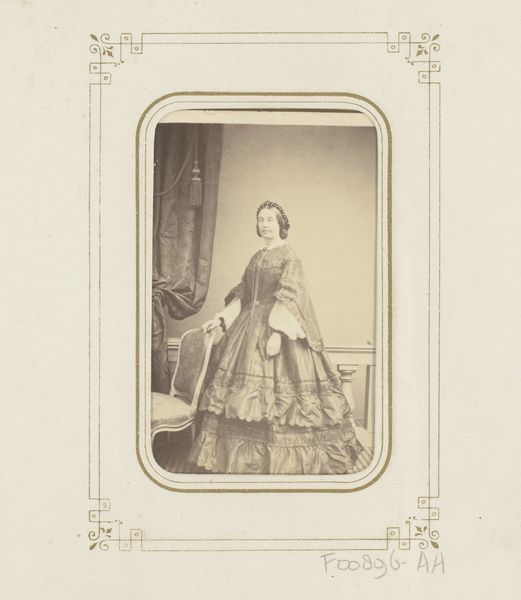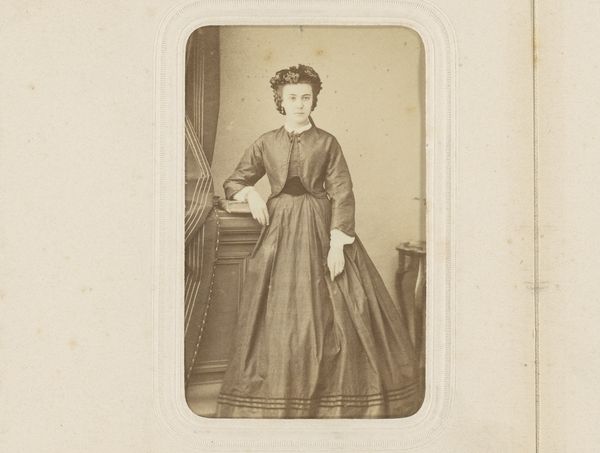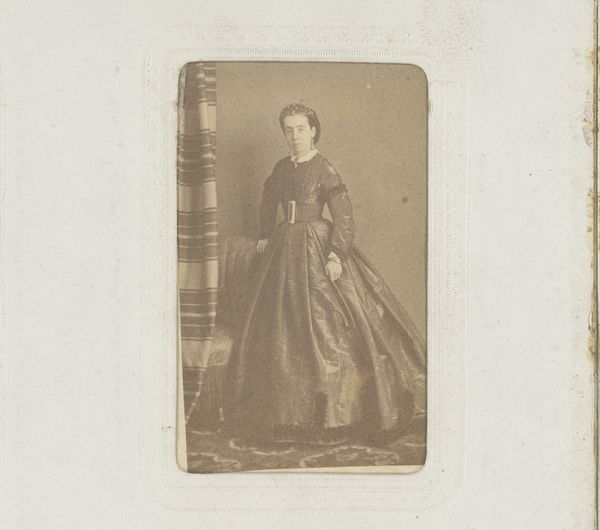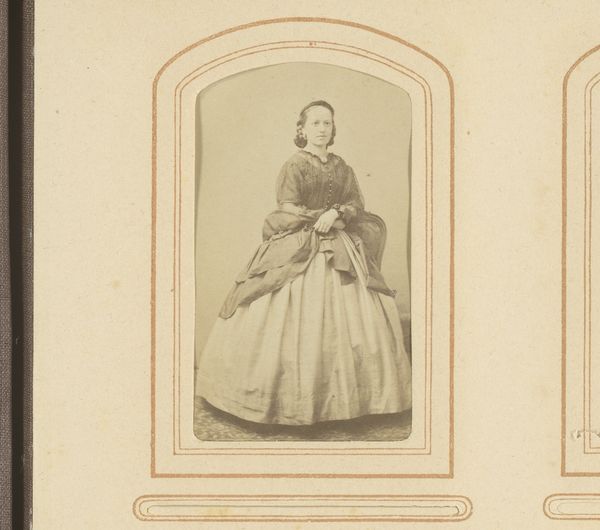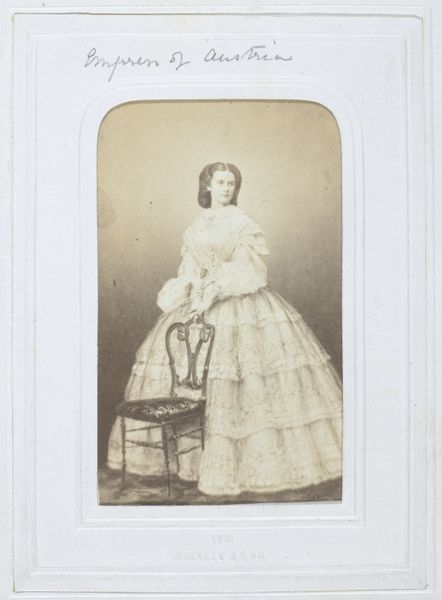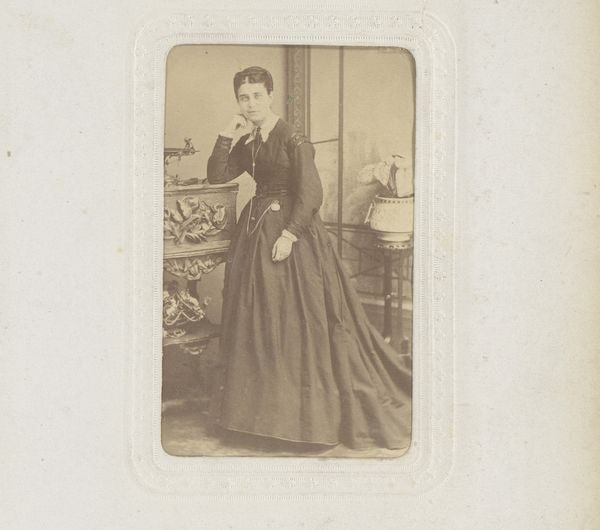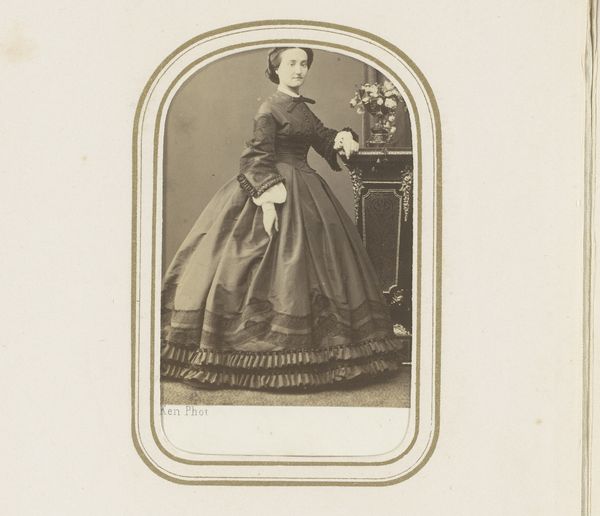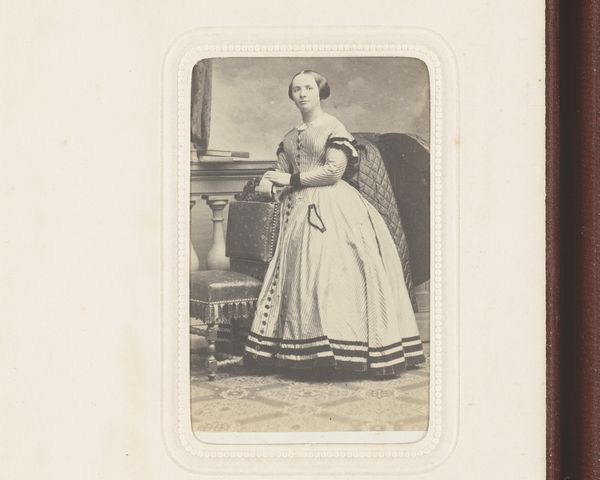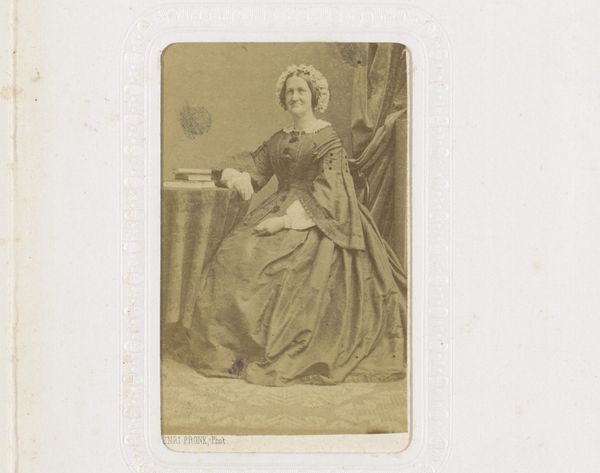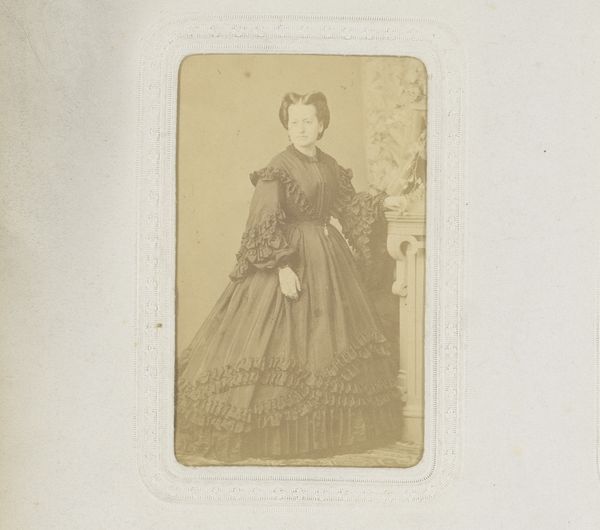
#
pencil drawn
#
aged paper
#
toned paper
#
light pencil work
#
pencil sketch
#
old engraving style
#
personal sketchbook
#
pencil drawing
#
sketchbook drawing
#
pencil work
Dimensions: height 86 mm, width 52 mm
Copyright: Rijks Museum: Open Domain
Editor: This is a portrait of a woman with flowers, standing next to a chair. It's credited to Julio Planchard y Ca., and dates sometime between 1860 and 1890. The photograph is toned sepia. I find the woman’s expression reserved, even a little melancholic. What story do you think this image tells? Curator: It certainly evokes a sense of restrained emotion, doesn't it? Considering the historical context, portraiture during this period, especially carte-de-visite photographs like this one, became increasingly accessible to the middle class. This accessibility democratized image-making. Who could now participate in cultural representations of themselves? What's remarkable is that this is not just a simple snapshot; it is carefully posed. Do you notice the studio props like the chair and flowers? Editor: Yes, I see the way she's posed with the chair and flowers, suggesting a level of status and decorum, I hadn’t considered the rising middle class element. Curator: Exactly. The setting constructs an image of respectability, and participation in social mobility, particularly for women, as the trappings of class became more broadly accessible, were such conventions limiting or empowering? Editor: That’s a fascinating point. It makes me rethink how I initially perceived her reserved expression. Perhaps it’s not sadness, but an assertion of newfound status? Curator: Perhaps. These early photographs also functioned as tools of social projection, not just personal mementos. Considering who held power to create those projections, then, gives us an angle on what norms and social roles were being performed, questioned, or subverted. What do you think of her dress, the way she is made up, her gaze? Editor: I never thought about this much context around this genre of pictures. I will now! Thank you so much for your reading on the work.
Comments
No comments
Be the first to comment and join the conversation on the ultimate creative platform.
